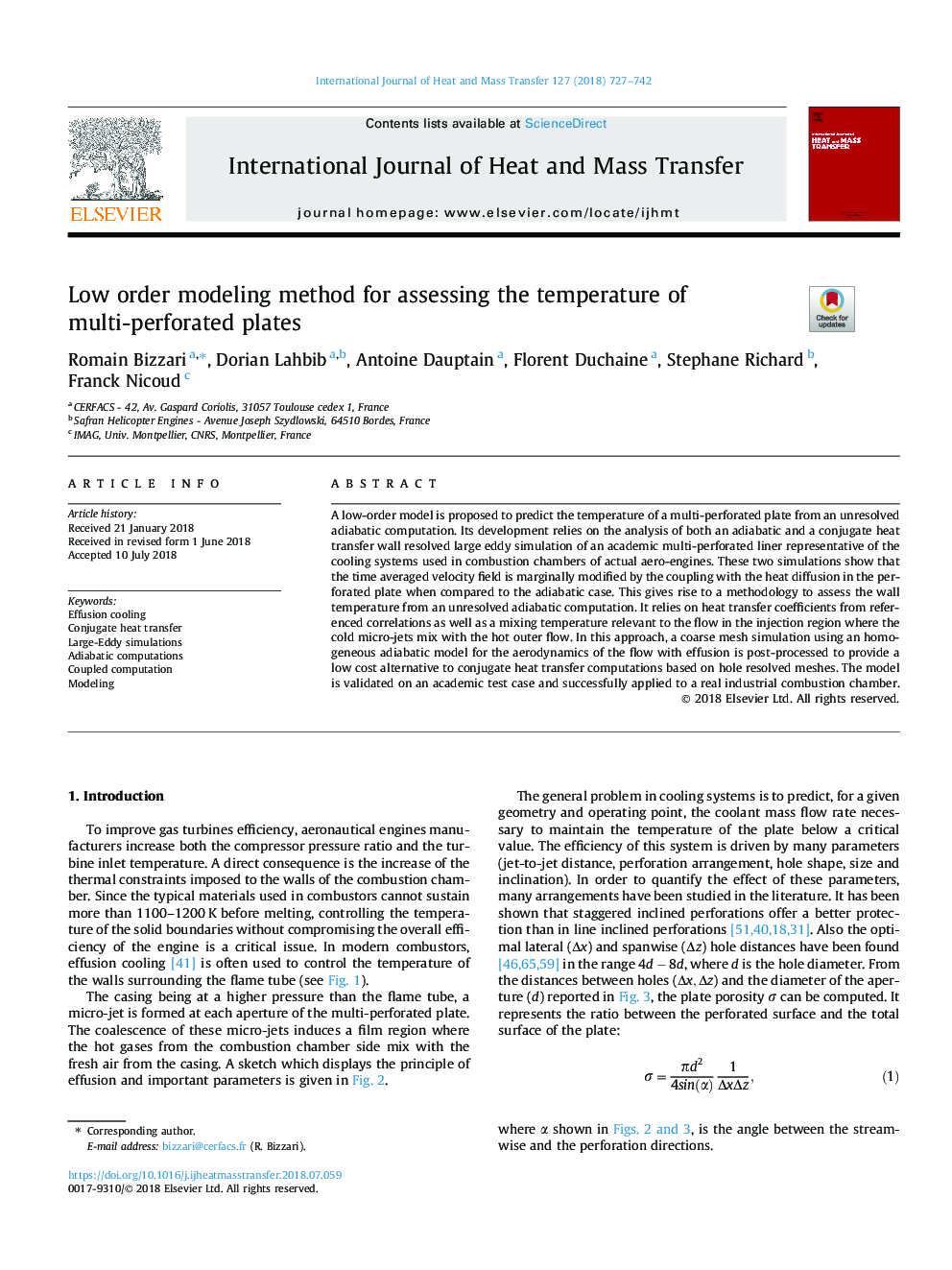| Article ID | Journal | Published Year | Pages | File Type |
|---|---|---|---|---|
| 7053707 | International Journal of Heat and Mass Transfer | 2018 | 16 Pages |
Abstract
A low-order model is proposed to predict the temperature of a multi-perforated plate from an unresolved adiabatic computation. Its development relies on the analysis of both an adiabatic and a conjugate heat transfer wall resolved large eddy simulation of an academic multi-perforated liner representative of the cooling systems used in combustion chambers of actual aero-engines. These two simulations show that the time averaged velocity field is marginally modified by the coupling with the heat diffusion in the perforated plate when compared to the adiabatic case. This gives rise to a methodology to assess the wall temperature from an unresolved adiabatic computation. It relies on heat transfer coefficients from referenced correlations as well as a mixing temperature relevant to the flow in the injection region where the cold micro-jets mix with the hot outer flow. In this approach, a coarse mesh simulation using an homogeneous adiabatic model for the aerodynamics of the flow with effusion is post-processed to provide a low cost alternative to conjugate heat transfer computations based on hole resolved meshes. The model is validated on an academic test case and successfully applied to a real industrial combustion chamber.
Related Topics
Physical Sciences and Engineering
Chemical Engineering
Fluid Flow and Transfer Processes
Authors
Romain Bizzari, Dorian Lahbib, Antoine Dauptain, Florent Duchaine, Stephane Richard, Franck Nicoud,
